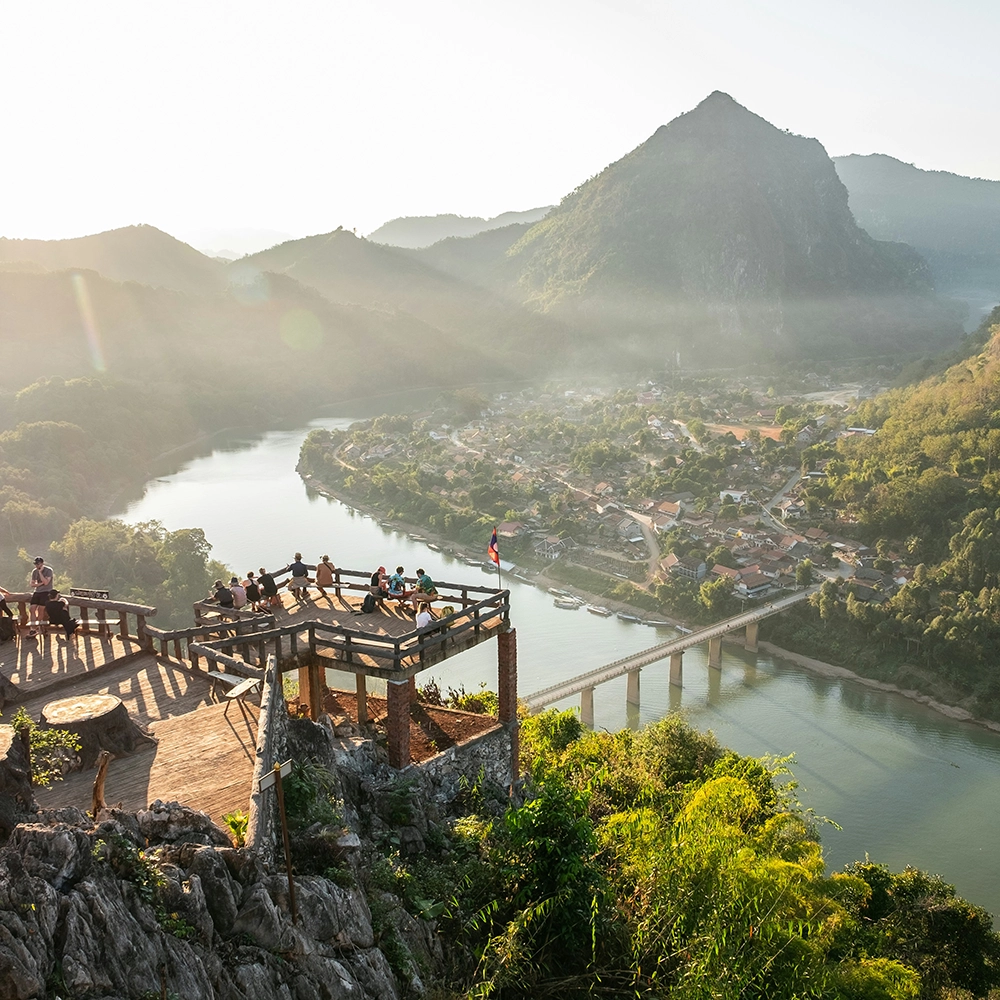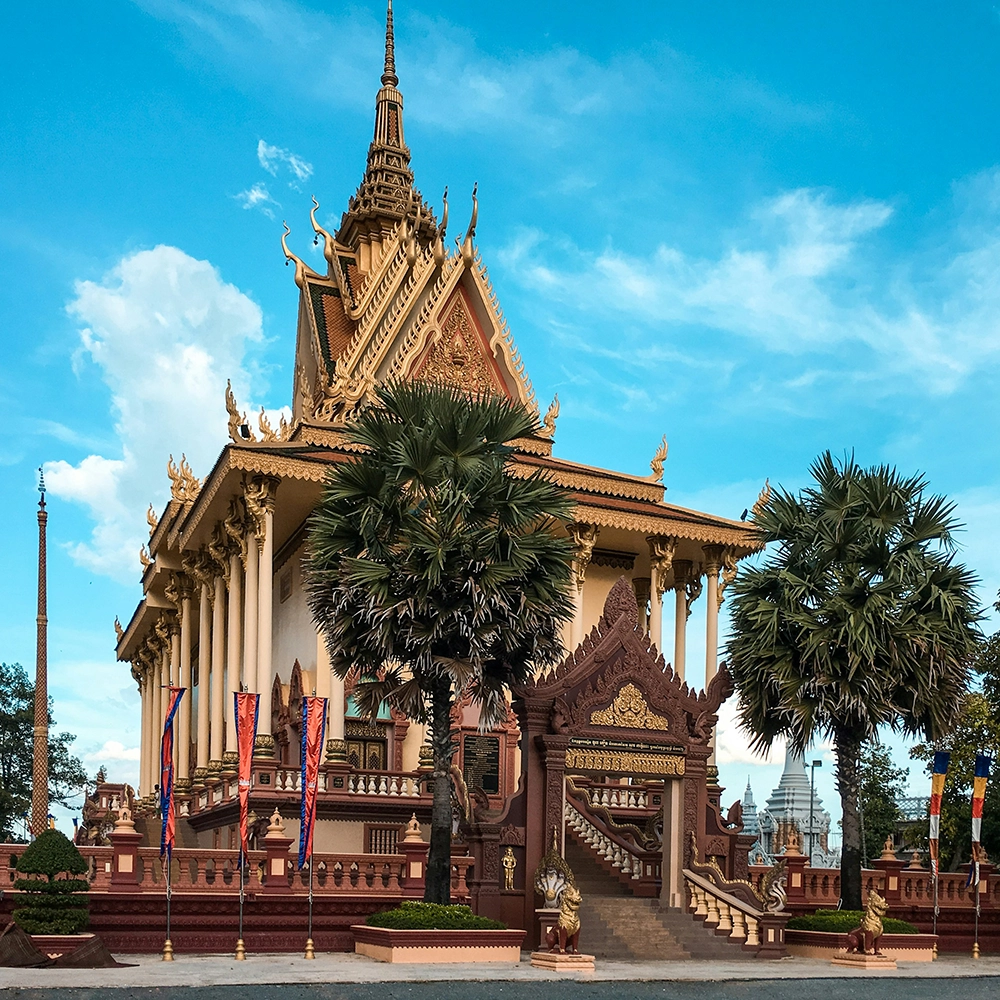If you think travel insurance can be complicated (it doesn’t have to be), then try figuring out what kind of visa you need to visit another country. As tough as it is sometimes, it’s not something you want to trust to luck. Getting it wrong can really put a damper on your trip.
“I remember when I first traveled to Vietnam. I had read online that a tourist could get a visa upon arrival. So I stopped my research there, booked my ticket from the Philippines, and planned to get a visa upon arrival,” said former Severn Corners travel writer, Luke Armstrong.
“What I didn't account for was that (at that time) you needed a letter in advance from the Vietnamese government in order to get a visa on arrival. The Vietnamese customs were poised to send me back to where my connecting flight had been in Singapore. I gave the customs agent my sad puppy face while giving them my smile that said, ‘Sorry, I am a stupid foreigner and everything confuses me.’”
Rather than the 60-day tourist visa he’d planned on, Luke ended up paying a $300 “fee” for a two-week emergency pass. This just goes to show that even experienced travelers make mistakes.
Seven Corners wants to help you avoid those mishaps, though. This Southeast Asia guide to visas is a starting point, but don’t stop there. The links and resources below will help you confirm the most up-to-date information with your destination’s embassy or consulate.
Editor’s Note: The information below was accurate as of September 2025. Please check your destination’s immigration or tourism website to confirm visa requirements before traveling.
What Are the Entry Requirements for Southeast Asia?
Many countries in Southeast Asia require only a valid passport for citizens of the U.S., U.K., Canada, Australia, and New Zealand. Additional authorization such as visas and proof of travel insurance may be necessary, too. Visit the embassy of your destination to confirm what, if any, documents you need to enter the country.
Visa for Bali and Indonesia
Visitors from the U.S., Canada, most of Europe, Australia, and New Zealand can get a visa upon arrival (B1 visa), but take note that you can’t actually get it on arrival. You’ll need to apply online before going to Indonesia. The B1 tourist visa can be purchased for a fee of about $30 USD for stays of up to 30 days.
You’ll need to arrive through an official gateway and must have proof of a return or onward ticket. Also, be prepared to pay a tourist tax if you’re visiting Bali specifically. It’s about $10 USD.
If you want to stay longer than 30 days, you must get a tourist visa (C1 visa) before going to Indonesia. These are good for up to 60 days and can be renewed several times, up to 180 days. Tourist visas cost about $60 USD.
Get more information about visas for Indonesia at the country’s Directorate General of Immigration.
Visa for Cambodia
International visitors from most countries are required to carry a passport and visa when traveling to Cambodia. An eVisa for tourists (T-Visa) is valid for 30 days with the option to extend it for another 30 days. An eVisa for Cambodia costs about $30 USD. Note that it is a single-entry visa.
Visas on arrival are available; however, the Cambodian embassy recommends obtaining your visa before traveling. If you do choose to get a visa on arrival, this option is only available at Cambodia’s international airports (Phnom Penh, Siem Reap, Sihanoukville). Complete the form on the plane, then submit it with a $30 USD fee in cash at entry.
Some land and water entry points issue visas on arrival, including Poipet (Thailand) and Vinh Suong, Xa Via, and Moc Bai (Vietnam). Be aware that these close periodically and so may be less reliable.
In addition to your application and a valid passport, you will need two passport-sized photos and proof of onward travel to get a visa on arrival. Tourist visas on arrival cost about $37 USD, which includes a processing fee.
Visas for Laos
Visitors need a valid passport and visa to visit Laos. You can get an eVisa for Laos online by uploading your passport bio page and a recent 4x6 cm photo. An eVisa costs $50 USD.
With your passport and eVisa approval letter (the document that actually permits admission), you can enter the country through a specific list of entry points:
- Wattaay International Airport
- Luang Prabang International Airport
- Pakse International Airport
- Lao-Thai Friendship Bridge I
- Lao-Thai Friendship Bridge II
- Lao-Thai Friendship Bridge IV
- Boten International Checkpoint
- Boten Railway Station
- Khamsavath Railway Station
Travelers from certain countries, including the U.S., can also get a visa on arrival. These are good for up to 30 days. The cost varies by nationality; U.S. citizens can expect to pay $42 USD. Be sure to have your passport, an additional passport-sized photo, proof of onward travel, and evidence that you can support yourself financially.
Visas on arrival are issued at most, but not all, border crossings. And depending on your entry point, you may actually need a pre-arranged visa, meaning it’s not quite so “on arrival.” Consult the embassy before travelling to make sure you have accurate and complete details.
Visa for Malaysia
To enter Malaysia, you must have a valid passport. Citizens of the U.S. do not need visas for tourism and business visits less than 90 days. The same applies for citizens of Canada, Australia, New Zealand, and the U.K.
Visa for Singapore
To enter Singapore, you'll need a valid passport. Visas are not necessary for citizens of the U.S., Canada, the U.K., Australia, or New Zealand. If you're visiting for tourism or business, you can generally stay in Singapore for 30 to 90 days, depending on your nationality. The length of time is at the discretion of the Immigration & Checkpoints Authority (ICA).
All visitors must obtain an SG Arrival Card within three days of entering Singapore. You can do this through the website or MyICA Mobile app. Getting this document is free of charge.
You must also get an electronic Visit Pass, also known as an e-Pass. This replaces the traditional stamp in your passport and is emailed to the address provided on your SG Arrival Card.
Visa for Thailand
Visas are not required for stays in Thailand of up to 60 days for citizens of the U.S., Australia, Canada, New Zealand, or the U.K., but three-month tourist visas can be arranged before arrival.
All visitors to Thailand must carry a passport valid for at least six months. You also need proof of onward passage, either a return or through ticket, and a Thailand Digital Arrival Card (TDAC). You can get a TDAC before entering Thailand, but it must be done within three days of arrival.
Read more >> See how travel insurance saved Merah's honeymoon in Thailand.
Visa for Vietnam
Residents of many countries, including the U.S., need both a passport and a valid visa to enter Vietnam. A tourist eVisa usually lasts 90 days. A single-entry eVisa for Vietnam costs $25 USD, while a multiple-entry visa costs $50 USD.
You need to specify your date of entry and exit. Tourist visas can commonly be extended with little hassle.
There are many countries that are exempt from the visa requirement for shorter stays. This includes Chile, Panama, the U.K. and several other European countries, and a handful of Asian nations. Find the complete list of countries that don’t require a visa for Vietnam on its government website.
Visa for Myanmar
In Myanmar you need a valid passport with at least six months of validity remaining, and a valid visa for Myanmar. The “visa on arrival” scheme has been discontinued; only citizens of a very select list of countries are eligible.
Fortunately for U.S. travelers, Myanmar offers an eVisa. Visit the country’s official site to apply. The eVisa costs $50 USD (payable via credit card). You'll also need to upload a recent color ID image along with your passport, and proof of return ticket and a booking at registered lodging.
Watch >> See how travel insurance arranged and paid for Felipe's emergency medical evacuation from Myanmar.
Visas for the Philippines
Tourists with a U.S. passport may enter without a visa for stays not exceeding 30 days. You must have proof of a return or onward journey ticket.
For stays of longer than 30 days, you’ll need to get an extension through a Temporary Visitor (9A) visa waiver. This allows you to stay in the Philippines for an additional 29 days. Further extensions can be obtained through the Bureau of Immigration within the Philippines.
General Visa Tips
- Plan your trip around the length of stay mandated by your visa.
- If you plan to stay longer, apply for a longer visa from the embassy in your home country or from an embassy in a neighboring country. Alternatively, investigate the ease of extending a visa within the country.
- Know whether your visa is single- or multiple-entry. Leaving the country if you have a single-entry visa, even if it’s only for the day and regardless of how much time remains on the visa, means you will have to apply for a new visa before re-entering.
- Stock up on passport photos. You’ll probably need at least two pictures each time you apply for a visa.
- Have the correct amount of local currency (or U.S. dollars) to pay the on-arrival visa fee. Cash should be new and in good condition (no rips or markings, and minimally wrinkled). Note which countries only accept cash and which only accept credit card or digital payment.
- Dress smartly when you’re visiting embassies, consulates, and borders. You may be judged on your appearance.
- If entering by land or sea, check if the border post offers visas on arrival. Some do not. Also, some countries only accept eVisas at certain borders, regardless of whether you’re entering by air, land, or water.
- Be aware that travelers are often targeted by transport and foreign exchange scams at land border crossings.
Passport Smarts: Requirements for Southeast Asia
To enter most countries, your passport must be valid for at least six months from your date of entry, even if you’re only staying for a few days. It’s probably best to have at least a year left on your passport if heading off on a big trip around Southeast Asia.
Border guards may refuse entry if your passport doesn’t have enough blank pages available. If you are reaching the end of your passport pages, get more pages added before you travel (if this is a service offered by your home country), or apply for a new passport. If you're already on the road, you can apply for a new passport in most Southeast Asian capitals at your home embassy or consulate.
Travel Insurance for Southeast Asia
Some countries may require proof of travel insurance for entry. This is intended to show that, if you get sick or injured during your visit, you'll be able to pay for medical treatment or emergency medical evacuations.
Even without it being a stated requirement, it's always a good idea to have travel insurance when traveling internationally. Because your domestic health insurance typically does not cover care in another country, travel insurance helps to make sure you aren't stuck paying medical bills out of pocket.
Learn more about travel medical insurance or get a quick quote online before you travel. Licensed agents are also available to help you find the best coverage for your Southeast Asia adventure.
Contributors
Seven Corners Travel Editor Becky Hart and Luke Armstrong, with his experience and expertise traveling around Southeast Asia, were co-contributors for this article.




